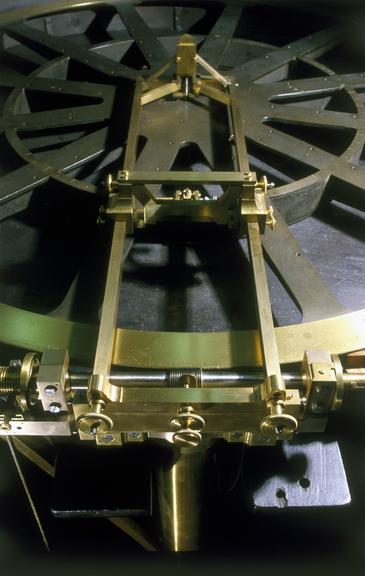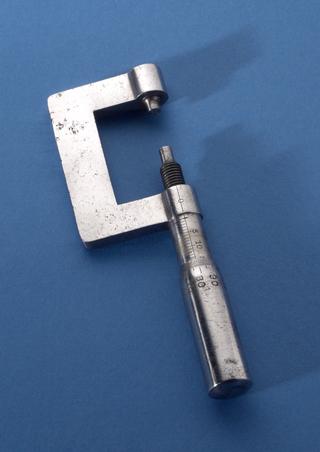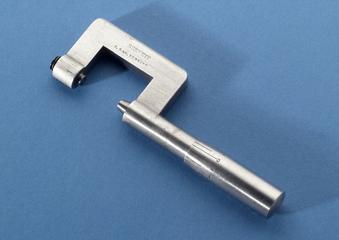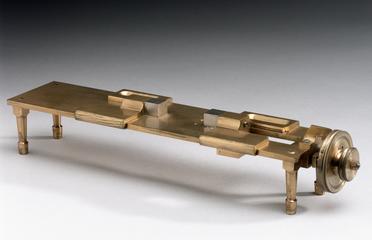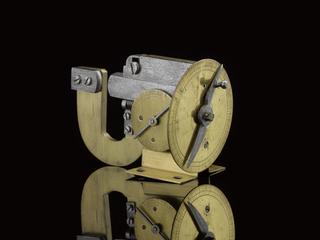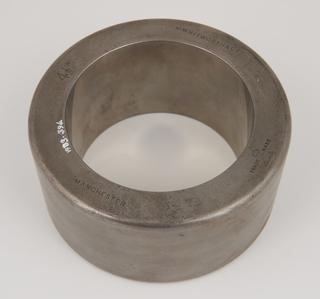Circular instrument dividing engine made by John Troughton, London, England in 1778. The Cast brass, 46 1/4-inch dividing plate, with twelve spokes and 2160 teeth is supported on a heavy wooden frame and tripod table stand (foot treadle missing). It is similar to the first successful dividing engine which was completed by Jesse Ramsden in about 1775.
Completed by John Troughton (c 1739-1807), this is similar to the first successful dividing engine which was completed in about 1775 by Jesse Ramsden (1735- 1800). Until the 1770s, scales on scientific instruments had been marked out by skilled craftsmen in a process called 'dividing', this was partly mechanized from the 1770s when dividing engines were introduced. Originally used on small instruments, by the 1850s they were used to graduate scales on large astronomical telescopes, making hand-dividing obsolete.



